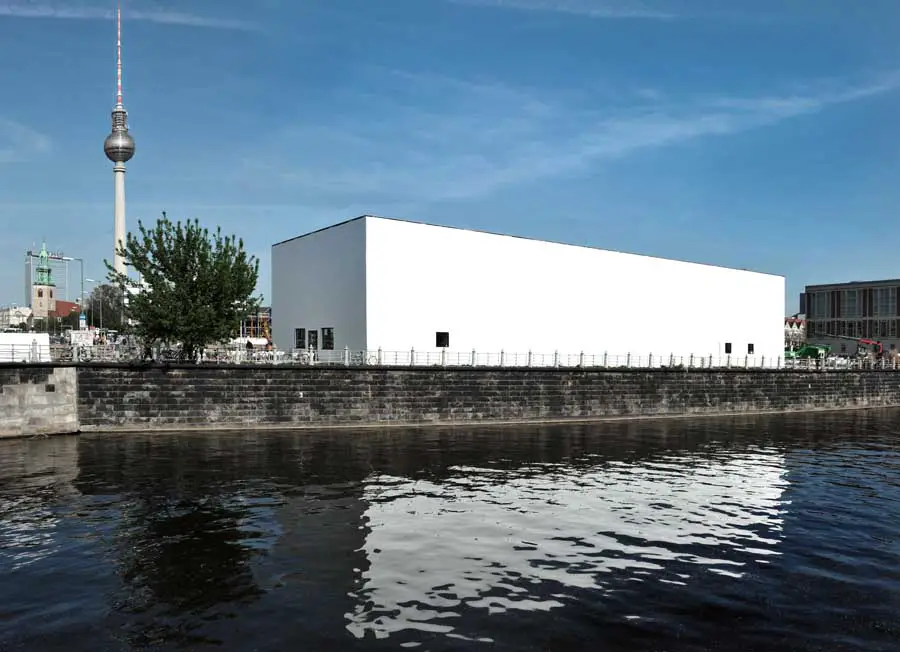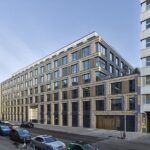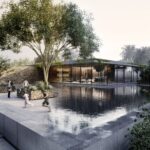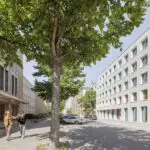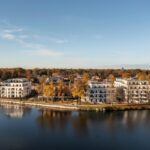Temporäre Kunsthalle Berlin, Carsten Nicolai Design, Project, Photo, News, Design, Image
Temporäre Kunsthalle Berlin Architecture
Temporäre Kunsthalle Berlin, Germany
31 Aug 2010
Temporäre Kunsthalle
Looking Back: Two Years Temporäre Kunsthalle Berlin 2008 – 2010
The Temporäre Kunsthalle Berlin was never an exhibition venue intended for eternity; from the onset, it was planned to operate for the period of two years. From September 2008 through August 2010, it stood at Schlossplatz in the center of Berlin, between Alexanderplatz and Brandenburg Gate, in the immediate vicinity of the Museum Island.
A building as pragmatic as it was provisional, a cube with a height of eleven meters, containing an exhibition space measuring 20 x 30 meters, as well as two annexes for the Book Shop and the Café. During this period, a total of 17 shows and more than 150 accompanying events took place: lectures, discussions, readings, performances, film screenings, and concerts, as well as the Montags Bar featuring artist-DJs. The exhibitions were supplemented by an education program as well as elaborately designed publications and editions by the participating artists.
During the total of 467 exhibition days, more than 212,500 visitors viewed the artistic contributions of more than 800 artists, almost all of whom live in Berlin.
With the façade projects conceived for the Temporäre Kunsthalle Berlin by Gerwald Rockenschaub, Bettina Pousttchi, and Carsten Nicolai, the building was moreover transformed into an artwork in public space, visible to all and offering the artists the opportunity to prominently position their artistic statements and critically reflect on the treatment of urban space.
The exhibition program in the interior space was divided into two complementary parts. In the first year, outstanding artistic positions and important current discourses in contemporary art were exemplarily staked out by the shows of Candice Breitz, Simon Starling, Katharina Grosse, and Allora & Calzadilla. Curated by members of the Artistic Board of the Temporäre Kunsthalle Berlin, these four exhibitions offered an outside view of Berlins artistic landscape and its media diversity. The program was rounded off by five cabinet exhibitions in the specially installed project space.
The concept for the second year was developed by Angela Rosenberg. Committed artists were invited to curate group shows. The aim was not only to present the perspectives of insiders addressing their own local artistic context, but to grasp and employ the Kunsthalle itself as an extension of artistic processes.
In the exhibitions by Kirstine Roepstorff (Scorpio’s Garden), Karin Sander (Zeigen. An Audio Tour through Berlin), Phil Collins (Auto-Kino!), Tilo Schulz (squatting. erinnern, vergessen, besetzen), and John Bock (FischGrätenMelkStand), the artist-curators newly interpreted the medium of exhibition as an artwork and conceived approaches to question the complex relations between artwork, institution, exhibition space, and viewer in a direct debate with the invited artists, their ideas and networks.
The spatial possibilities of the large exhibition hall proved to be advantageous, forcing the artist-curators to seek new and often surprising paths and combine what appeared incompatible.
Hence, the Kunsthalle, if only for a short period of time, became a unique location spanning the art scene and its diverse networks, testing in laboratory-like postulates an intensive, practice-oriented exchange between local artists, offering the audience a unique and direct experience of contemporary art.
Benjamin Anders (Managing Director, Temporäre Kunsthalle Berlin)
Angela Rosenberg (Curatorial Management, Temporäre Kunsthalle Berlin)
Dieter Rosenkranz (Patron and Artistic Advisor, Temporäre Kunsthalle Berlin)
Previously:
19 Aug 2010
Temporäre Kunsthalle Berlin Project
After a period of two years, the Temporäre Kunsthalle Berlin will close down as planned on August 31, 2010. On this day, the exhibition FischGrätenMelkStand will be open until 6 pm, the closing party will start at 8 pm. Afterwards, the Kunsthalle will disappear from Schlossplatz.
This will mark the end of a project that from September 2008 to August 2010 established a new—temporary—venue at Schlossplatz for viewing and discussing art, its diversity and complexity. The Temporäre Kunsthalle Berlin—entirely funded on a private basis—was dedicated to the presentation of international contemporary art produced in Berlin, placing high value on this open creative space.
Sixteen exhibitions took place over the two years, accompanied by more than 150 events. The exhibition program was not only limited to the 600-sqm exhibition hall. The façade projects conceived for the Temporäre Kunsthalle Berlin transformed the entire building into an artwork in public space.
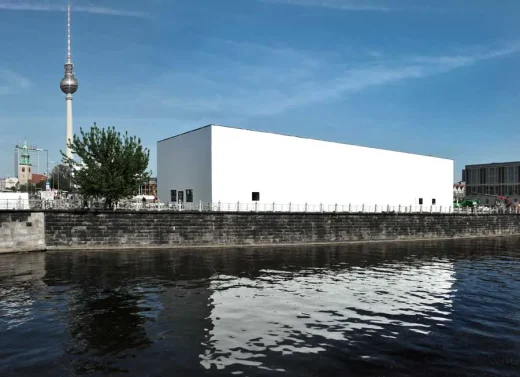
photograph : Benjamin Pritzkulei © Carsten Nicolai, VG Bild-Kunst, Bonn 2010
Courtesy Galerie EIGEN + ART, Leipzig/Berlin und PaceWildenstein
The exhibition program in the interior area of the Kunsthalle consisted of two parts. During the first year, the diversity of media in contemporary art was exemplarily presented in four individual artistic positions standing for important current discourses in contemporary art.
The subsequent concept developed for the second year by the Curatorial Management (Angela Rosenberg) opened highly different perspectives on the lively local art scene in five group shows curated by artists. In these exhibitions, the artist-curators interpreted the medium of exhibition as an artwork in a new way, using this to examine the complex relations between artwork, institution, and viewer, as well as to directly engage with the invited artists, their ideas, and networks.
In this respect, these shows addressed not only the limits of the white cube, the exhibition architecture and organization, but also pointed to possibilities of defying conventions and taking new, exemplary approaches.
In addition to the closing party on August 31, the following events of Temporäre Kunsthalle will take place during the last week.
August 23
| 8 pm, Special Screening feat. Mickey Rourke II
96 min., English with German subtitles
Mickey Rourke, American movie actor and professional boxer, is one of John Bock’s favorite heroes. During the exhibition, two classic films from the 1980s with Rourke in the lead role will be shown against the backdrop of FischGrätenMelkStand.
|10 pm, Montags Bar
The first official SCHLAMPENBALL with TRACHT & PRÜGEL (Jeans Team DJs), LINCE (DJ), and MACHINES DÉSIRANTES (Visuals). Carried out by SEP* (Sozialistische Einheiz Party)
„One, two, and now fall in, you bitches, hustlers, pimps, and backbiters of this washed-up and wily city! We’re celebrating the penultimate Montags Bar behind the Temporäre Kunsthalle and are going to have a blast. It’s strictly a dance evening with perverse visuals and dresscode: “Ground down / Dirty Glitter”. Tease the rest of your spliced hair and put on your long claws! Pump parade! Schlossplatz! March up! – Unshaven.“
August 28
| 6 pm, Long Night of the Museums – the exhibition is open until 2 am
August 30
| 8 pm, John Bock: Vortrag
In a humorous and eccentric style, John Bock’s performative, quasi-scientific lectures combine language and film, as well as sculptural objects, into complex installations. His lecture on FischGrätenMelkStand leads the visitor through the total artwork he has devised, consisting of an absurd, multi-level meta-structure of car tires, corrugated plastic, socks, burnt pizzas, and over 150 works by 63 artists. On two evenings, John Bock will explore the FischGrätenMelkStand and the artworks it contains.
The lecture will be held in German.
| 9.30 pm, Montags Bar
At the DJ’s desk: Martina Nie Tita (Discoteca Flaming Star) with “strange weird combinations of songs and other poems that broke our hearts and changed our lives…”
August 31
| 8 pm (admission), closing party with a concert by RASTER-NOTON
| 9 pm Aoki Takamsa (www.aokitakamasa.com)
| 10 pm Grischa Lichtenberger (www.grischa-lichtenberger.com)
| 11 pm Kangding Ray (www.kangdingray.com)
The exhibition FischGrätenMelkStand will be closed and inaccessible during the closing party!
Extended opening hours
During the last week, the exhibition FischGrätenMelkStand will be open as follows:
Monday, 23 11 am–8 pm
Tuesday, 24 – Thursday 26 11 am–6 pm
Friday, 27 11 am–9 pm
Saturday, 28 11 am–2 am (Long Night of the Museums)
Sunday, 29 11 am–9 pm
Monday, 30 11 am–8 pm
Tuesday, 31 11 am–6 pm
The catalog accompanying the exhibition FischGrätenMelkStand will be published on August 23 by Verlag der Buchhandlung Walther König, Cologne. With texts by Angela Rosenberg and Andreas Schlaegel as well as an extensive picture spread allowing the reader to take a tour of the installation.
ISBN 978-3-86560-872-7, German / English, hardcover, 144 pages, 111 color illustrations.
Special sale
Starting now, the Temporäre Kunsthalle Berlin and Buchhandlung Walther König will hold a special sale of artist’s books and exhibition catalogs at reduced prices in the bookshop on site, where until August 31 the editions of the Kunsthalle can also be purchased (among others, by Allora & Calzadilla, John Bock, Jason Dodge, Carsten Nicolai, Bettina Pousttchi, Karin Sander, and Tilo Schulz)
Previously:
Temporäre Kunsthalle Berlin Show
Facade project “autoR” of Carsten Nicolai for the Temporäre Kunsthalle Berlin
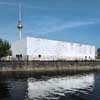
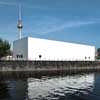
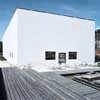
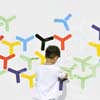
photos : Benjamin Pritzkulei © Carsten Nicolai, VG Bild-Kunst, Bonn 2010 ;
Courtesy Galerie EIGEN + ART, Leipzig/Berlin und PaceWildenstein

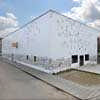
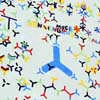
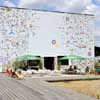
photos : Benjamin Pritzkulei © Carsten Nicolai, VG Bild-Kunst, Bonn 2010,
Courtesy Galerie EIGEN + ART, Leipzig/Berlin und PaceWildenstein
“By focussing in my work on self-organizing processes, I wish to explore the potential of randomness and errors while retaining control to the extent that I can organize them and initiate creative processes. Many of my works rely on a specific rule and have the character of models. The model serves as an ordering principle that facilitates the identification of chaotic movements. I am interested in both – chaos and order – and they lie incredibly close to one another.” – Carsten Nicolai
During the initial phase from June 8–13, free workshops will be held for more than 25 registered school classes and kindergarten groups to actively participate in autoR.
To coincide with the autoR project, Nicolai will release a signed limited edition of a work.

photo : Benjamin Pritzkulei © Carsten Nicolai, VG Bild-Kunst, Bonn 2010.
Courtesy Galerie EIGEN + ART, Leipzig/Berlin und PaceWildenstein
>Carsten Nicolai (born 1965 in Karl-Marx-Stadt, lives in Berlin) has participated in many international group shows including documenta X and the 49th and 50th Venice Biennial, as well as realizing extensive solo exhibitions at venues including Hamburger Kunsthalle (2008), Haus Konstruktiv, Zurich (2007), Schirn Kunsthalle Frankfurt (2005), and Neue Nationalgalerie, Berlin (2005).
Temporäre Kunsthalle Berlin, Schlossfreiheit 1, 10178 Berlin
Postaddresse: Cube Kunsthalle Berlin gGmbH, Alexanderstraße 1, # 1127, 10178 Berlin
Contact Temporäre Kunsthalle Berlin: T +49 30 2576204-31, F +49 30
Carsten Nicolai autoR images / information from Temporäre Kunsthalle Berlin
Buildings close by include:
Am Kupfergraben 10 gallery building
David Chipperfield Architects
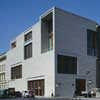
photo © Ioana Marinescu
Am Kupfergraben 10
Berliner Dom, Mitte
–

photo © Adrian Welch
Berliner Dom Building
Jacob-und-Wilhelm-Grimm-Zentrum, Mitte
Architect: Max Dudler
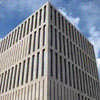
photo © Adrian Welch
Jacob Wilhelm Grimm Zentrum
Location: Schlossplatz, Berlin, Germany, western Europe
Berlin Architecture
Berlin Architecture Walking Tours
Berlin Architecture Designs – chronological list
German Architecture Design
Comments / photos for the Temporäre Kunsthalle Berlin Architecture page welcome
Berlin, Germany

